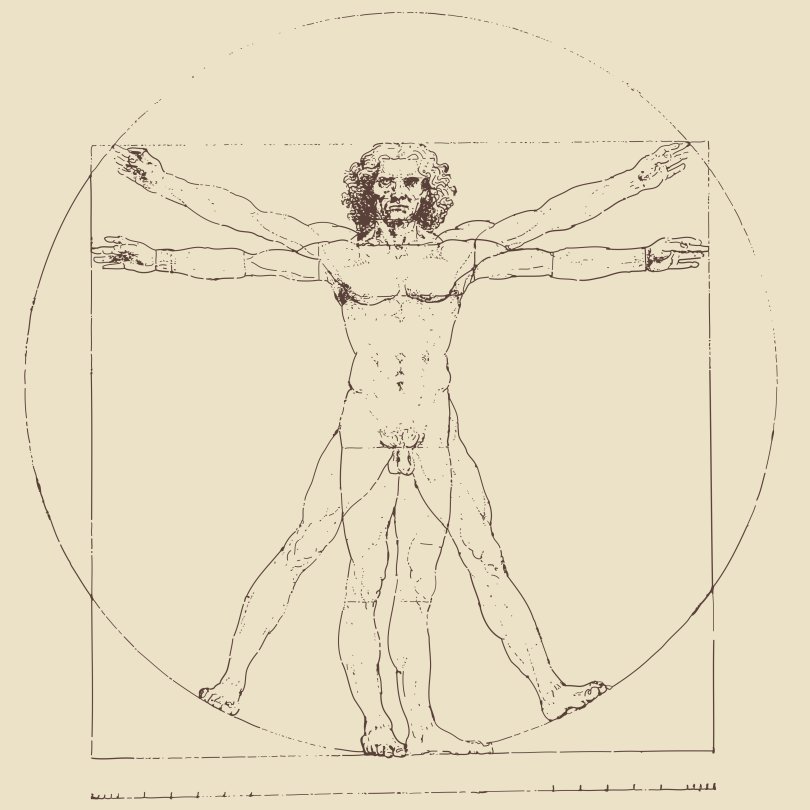
Health and environment
Using a novel approach applied to the populations of France, the United Kingdom and the United States, economists explore inequalities in body mass index and highlight a disparity between men and women.
Humanity is constantly growing... and getting bigger! At the beginning of the 19th century, the average French person was 1.64 m tall, compared with 1.75 m two hundred years later. This growth can also be seen on the weighting scale. Over the same period, the average weight has risen from 50 kg to over 77 kg. As shown by the economist Robert W. Fogel, the same pattern has been observed in all Western populations since 1700. He interprets this phenomenon as the result of technological progress freeing humanity from under-nutrition and disease1.
However, for some time now, this gradual weight gain has been accompanied by another more rapid change: overweight. According to the World Health Organisation, two and a half billion people over the age of 18 are affected, just under half of whom are obese. Given this explosion of corpulence and its associated health risks, obesity has been recognised as a disease in 1997.
Despite having historically high obesity rates, the United States (42.7%), England (20.1%) and Mexico (36.9%) rank 13th, 86th and 19th respectively among the most affected countries. At the top of the rankings are the territories of the Pacific Ocean, where obesity can affect up to 80% of the population of the islands of Nauru, Tonga and the Cook Islands. With an obesity rate of 17% among adults, France stands in the 50 best countries.
Economists Fatiha Bennia, Nicolas Gravel, Brice Magdalou and Patrick Moyes have studied overweightness and obesity using the body mass index. Their innovative approach is not based on an aggregate measure of overweightness, but on the distribution of overweight people in a population.
Where do you draw the line between an ideal weight, overweightness and obesity? All health organisations define overweightness and obesity as an excessive accumulation of body fat. This minimalist proposal comes with a tool for estimating an individual's corpulence: the body mass index (BMI).
The BMI is the brainchild of a 19th-century Belgian scientist, Adolphe Quetelet. Like other minds of his century, this astronomer and mathematician applied mathematical and statistical tools to the study of human body in order to identify the laws governing it2. He had at his disposal a set of medical data from the French army containing information on the state of health, weight and height of a troop of soldiers. He noticed a correlation between the square of height and weight within the cohort, which gave rise to the formula for the Quetelet index, which later became the BMI. His work led to the concept of the "average man"[2] : an ideal human being having the average population characteristics similar to Leonardo da Vinci's famous Vitruvian Man, embodying a body of ideal proportions3.

After da Vinci by Zlatko Guzmic on Adobe Stocck
Easy to use and interpret, the BMI has become the leading indicator for the study of corpulence in medicine and all disciplines concerned with weight and its variations.
As convenient as it can be, it suffers from many limitations. One of them is its inability to differentiate between muscle and fat mass. Developed on the basis of a standard population of middle-aged adults in good health, it is ill-suited to analysing profiles that deviate from the norm. A critical eye is therefore required when applying this indicator to children, elderly, pregnant women and top-level athletes. For example judoka Teddy Riner is 2.04 m tall and weights around 130 kg when competing, with a BMI of 31.2, putting him in the obese.category I
The boundaries between BMI categories have also been the objects of criticism, notably for not taking into account the specific characteristics of different populations. In Asia, some people have complications associated with obesity at BMI values lower than the traditional thresholds. To deal with this situation, the WHO has an interpretation grid specific to the peoples of the Asia-Pacific region4. A BMI of 27 corresponds to an "obese" profile for an Asian man and an "overweight" profile for a European man.
Although often used for individual health checks, BMI can also be studied on a population-wide scale. Does the United States, with its 70% overweight population, half of whom being obese, compare favourably from a health point of view with another country with fewer obese people but a higher proportion of overweight individuals? To do this, we need to look at the distribution of each population across the different BMI classes. This is the challenge taken up by economists Fatiha Bennia, Nicolas Gravel, Brice Magdalou and Patrick Moyes.
Economists often compare distributions of variables such as income between individuals. The traditional comparison criteria used for this purpose tend to combine two principles: efficiency and equity.
A simple way to understand these two principles is to use the metaphor of a cake to be shared. The principle of efficiency concerns the size of the cake - how to provide the largest possible cake - while the principle of equity concerns the greater or lesser equality with which this cake is shared. The two principles can sometimes conflict. For example, we may have a small cake that is very evenly shared and a larger cake that is unevenly distributed. How can these two principles be mobilised when the considered "cake" is a BMI distributed within a given population?
When we look at a variable such as income or level of education, it is possible to order individuals into categories ranging from the 'worst' to the 'best'. The increase in efficiency in this type of situation is therefore easy to define: it takes the form of any transfer of a fraction of the population from a less to a more favourable category. In the case of the BMI, the ordering of categories is not always unequivocal. While it is undeniable that an individual's well-being decreases with BMI above the ideal range, there is no medical consensus about the ranking of the "underweight" and the various "overweight" categories.
Equalisation of the "cake" is usually defined as the transfer of a given quantity of cake from a well-endowed individual to a less well-endowed individual. When it comes to BMI, there is no such thing as a "given quantity" of cake. Equalisation is then defined as the combination of an individual moving from a less favourable category to a more favourable category and another individual moving from a more favourable category to a less favourable category in the case where the individual who "moves up" is in a less favourable situation - even after moving up - than the individual who moves down. Such a combination of 'moving up' and 'moving down' – called a Hammond transfer by the authors - reduces the initial category gap between the two individuals.
The simultaneous consideration of improved efficiency and equalisation is achieved through a notion of "dominance" between distributions developed by the authors, which allows robust comparisons of distributions based on these two efficiency and equity principles, at least in cases where there is no conflict between them. The authors' approach however does not allow a decision to be reached when equalisation and efficiency gains conflict.
To take account of the difficulty of ordering BMI categories unambiguously, the researchers distinguish between five possible such orderings (scenarios) that differ by the way they position the 'underweight' category relative to the various categories of excessive weight. Then, for each of these scenarios, they compare the distribution of BMI categories in France, the United Kingdom and the United States for both men and women.
The analysis reveals that France dominates the two other countries in all possible scenarios except one for women. The scenario in which the distribution of BMI categories among French women does not dominate those of British or American women is when underweight is considered to be the worst category. This result can be explained by the fact that France has a higher proportion of its female population in the underweight category than either the United Kingdom or the United States.
The analysis also reveals within each country a very marked gender inequality. The distribution of BMI categories among men dominates the distribution of those categories among women in all scenarios. Moreover, the inequality happens to be more severe in the United States than in the other two countries. This can be explained in part by the higher proportion of women in the extreme weight categories in the US, as compared to France and the UK.
Gender inequalities linked to body mass go far beyond what is revealed by an analysis of BMI category distributions. Women are more vulnerable to mental disorders linked to obesity and the social pressure of body standards. The same applies to the negative correlation between overweight and level of education and income ;
At the heart of a series of inequalities, body mass anomalies are a social problem from which women are the double victims. They are much more affected than men by these anomalies, and suffer more psychologically. The analysis carried out in this article has therefore identified a particularly significant gender inequality that is insufficiently integrated into the more general debates on these issues.